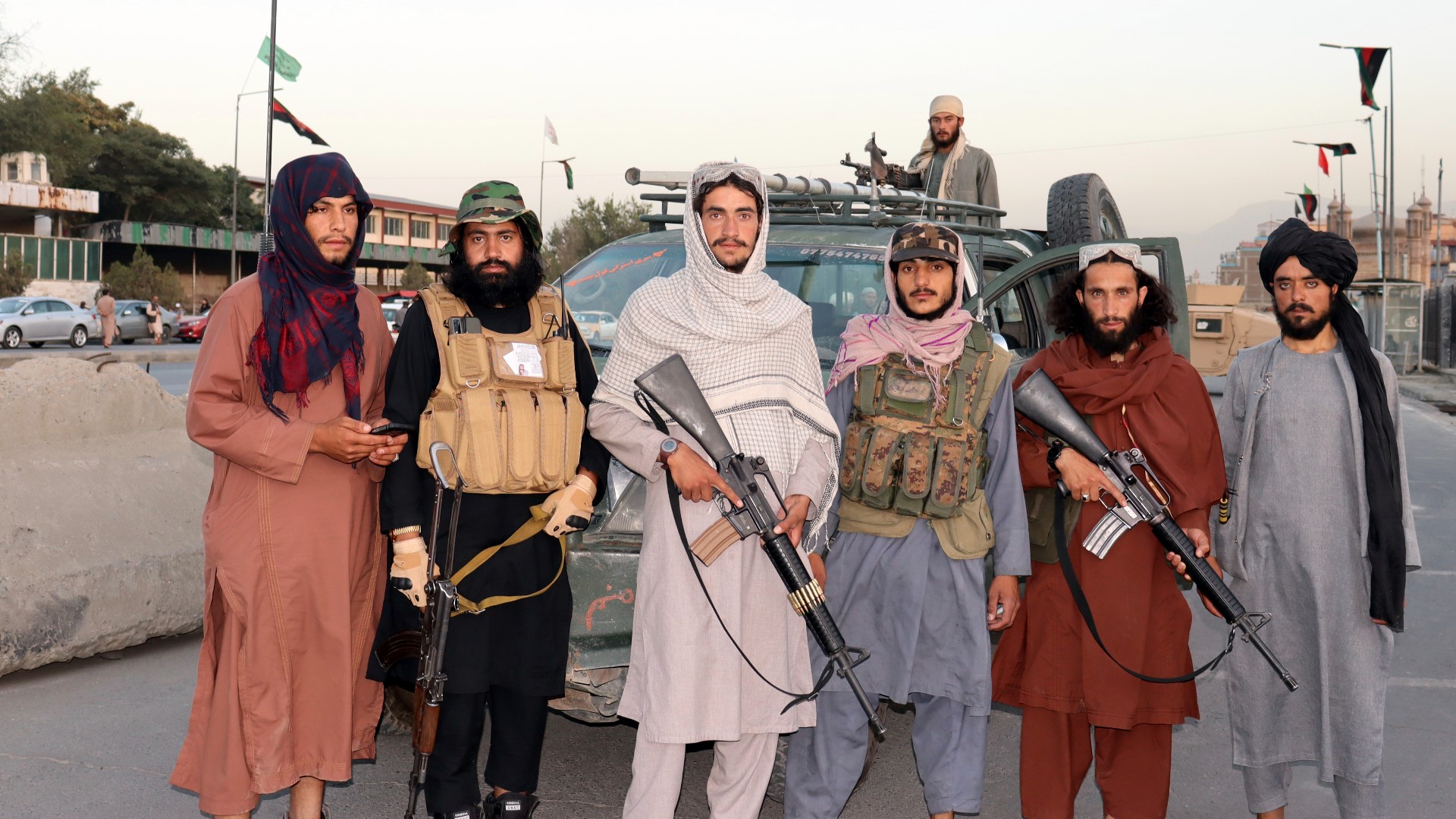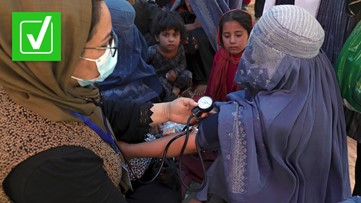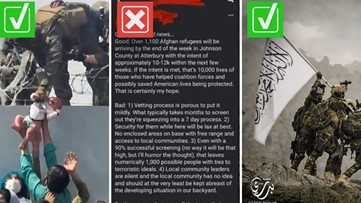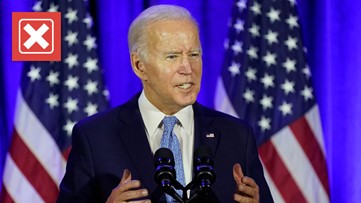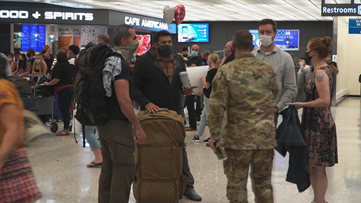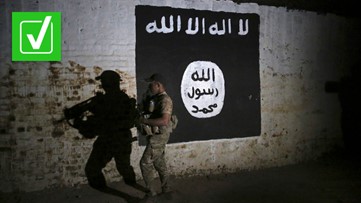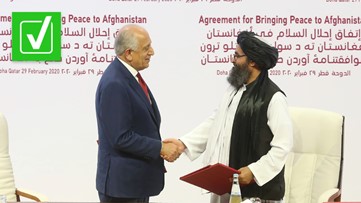The Taliban on Aug. 15, 2021, seized control of Kabul, marking the collapse of the Afghanistan government. Since the Taliban’s takeover, the United States has beefed up efforts to get American citizens and allies out of Afghanistan – with the goal of completing the mission by the end of the month.
With the Taliban back in power for the first time in nearly 20 years, the VERIFY team answered questions about the group and their history in Afghanistan as part of this week’s “VERIFY Weekly” feature. You can watch the full video on our YouTube page here.
THE QUESTION
Who are the Taliban?
THE SOURCES
THE ANSWER
The Taliban are an Islamic fundamentalist group. They were born out of a guerrilla fighter movement in the 1980s that resisted the Soviet Union occupation of Afghanistan.
WHAT WE FOUND
The Soviet Union left Afghanistan in 1989 -- a little more than nine years after first invading. The withdrawal was followed by years of civil war in Afghanistan as rival factions fought for power.
It was during that time in the early 1990s that some of the anti-Soviet guerrilla fighters came together to form the Taliban. The group gained support by promising stability and rule of law in the war-torn country.
In 1996, the Taliban seized the Afghanistan capital of Kabul. They then instituted a strict interpretation of an Islamic code of conduct called Sharia law. These rules are derived from Islamic holy scriptures, but modern interpretations of Sharia law are disputed.
Some interpretations of Sharia call for harsh punishments like amputation or stoning for certain types of misconduct like adultery or drinking. But most Muslim countries don’t actually enforce this type of discipline, according to the Council on Foreign Relations.
THE QUESTION
What is the difference between the Taliban and al-Qaida?
THE SOURCES
THE ANSWER
While the Taliban are primarily focused on ruling Afghanistan, al-Qaida is a terrorist group with a network of members across the world, according to the Stanford Center for International Security and Cooperation (CISAC).
WHAT WE FOUND
Al-Qaida carried out the 9/11 terrorist attacks. The group’s goal, according to CISAC, is to destroy all Western influence, eradicate Israel and enforce a strict interpretation of Sharia law.
Al-Qaida formed before the Taliban. It was founded in 1988 by Osama bin Laden. The Taliban formed in the early 1990s and ruled Afghanistan from 1996 until 2001.
While they are separate entities, the two groups share ties. The Taliban, which controlled Afghanistan at the time of the 9/11 attacks, sheltered members of al-Qaida before and afterward. That’s what initially prompted the U.S. to invade Afghanistan, which resulted in the toppling of the Taliban-controlled government.
The U.S. and United Nations say the Taliban and al-Qaida still maintain a relationship. A June 2021 U.N. report says the 2020 agreement between the U.S. and the Taliban, in which the U.S. said it would remove troops from Afghanistan, set expectations for a break between the Taliban and al-Qaida. However, the report says, the two groups remain closely aligned “and show no indication of breaking ties.”
THE QUESTION
Did the Taliban restrict women’s education the last time they were in power?
THE SOURCES
THE ANSWER
Yes, from 1996 to 2001, the Taliban prohibited women from getting an education as part of a number of oppressive restrictions on women’s rights.
WHAT WE FOUND
An October 2001 report from Human Rights Watch (HRW) produced shortly before the Taliban’s five-year reign of Afghanistan ended said, “The Taliban have sought to erase women from public life.”
During this time, girls over 8 years old were not allowed to attend school and women were banned from work outside the home, except for in healthcare. HRW said these were on top of edicts that forbid women from going out in public without a close male relative and requirements that women wear special clothing that concealed their entire body while in public.
An Amnesty International public statement from May 2021 added that the group enforced its rules “through public corporal punishment, or even death penalty or public execution.”
A 2020 Human Rights Watch report said the Taliban no longer officially oppose girls’ education, but very few Taliban officials actually permit girls to attend school past puberty, some not permitting girls’ education at all. That’s because individual commanders largely determine education policies in areas they control.
But, HRW noted, some local communities have successfully pressured Taliban commanders to change policies and allow girls to attend schools to sixth grade and beyond.
In a press conference held by the Taliban Aug. 17, a Taliban spokesperson said, “We are guaranteeing all of [women’s] rights within the limits of Islam.”
This included reassurances they would allow women to work and study “within those frameworks” and that women would be very active in society. The Taliban did not clarify what the frameworks entailed.
A spokesperson for the UN High Commissioner of Human Rights (UN OHCHR) acknowledged in a press release the Taliban’s recent promises that women’s rights would be protected but noted the international community is viewing these promises with skepticism given the Taliban’s history.
“Nevertheless, the promises have been made, and whether or not they are honoured or broken will be closely scrutinized,” the OHCHR said.
